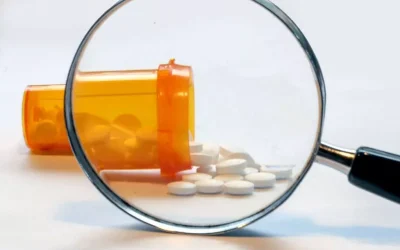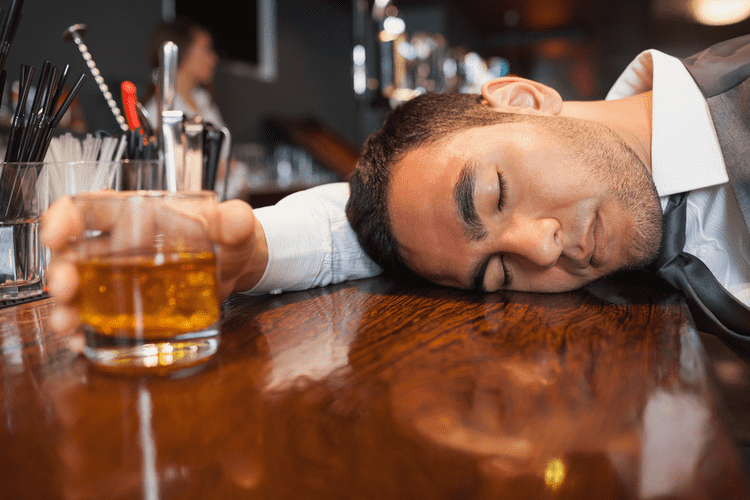Treatment for Alcohol Problems: Finding and Getting Help National Institute on Alcohol Abuse and Alcoholism NIAAA
It can also help prevent seizures or other complications that may arise. This post discusses five distinct categories of people who suffer from alcoholism. By exploring each category in depth, you’ll better understand the complexities surrounding alcoholism. You’ll also know why it requires special treatment for successful recovery.
Looking Ahead: The Future of Treatment
For more information about treatment options, see NIAAA’s Treatment for Alcohol Problems booklet. Although the replication study reproduced many of the findings of the original report, some discrepancies also existed. The resolution of these discrepancies will likely require further studies in additional subject emtricitabine populations. Remember that changing deep habits is hard, takes time, and requires repeated efforts. We usually experience failures along the way, learn from them, and then keep going. The good news is that no matter how severe the problem may seem, most people with AUD can benefit from some form of treatment.
What to look for in an alcohol rehab program
Evaluate the coverage in your health insurance plan to determine how much of the costs your insurance will cover and how much you will have to pay. Ask different programs if they offer sliding scale fees—some programs may offer lower prices or payment plans for individuals without health insurance. In addition to choosing the type of treatment that’s best for you, you’ll also have to decide if that treatment is inpatient (you would stay at a facility) or outpatient (you stay in your home during treatment). Your healthcare provider can help you evaluate the pros and cons of each.
How do alcohol use disorders affect people?
They begin drinking around age 16 and develop alcohol dependence later, around 29 years of age. This group has the highest rates of drinking, consuming alcohol on an average of almost 248 days a year and binge drinking on 69% of them with a maximum of 15 drinks. Other names for AUD include alcohol alcohol abuse and alcoholism misuse, alcohol dependence, alcohol addiction, and alcoholism. Risk factors for developing AUD include a family history of alcohol misuse, mental health conditions, and starting alcohol use at a young age. In many states, insurance companies and Medicaid now cover “telehealth” services.
People who fall into the young adult alcoholic subtype also rarely have a family history of alcoholism. Alcoholism is considered to be a heritable disease, as NIAAA reports that genetics can account for about half of the risk for developing the disease. The flip side of this coin, however, is that environmental and other factors make up the other half of the risks for the onset of addiction. In collecting the study data, the researchers made use of several characteristics of the Swedish social system that allow extensive data collection. In addition, extensive records exist documenting a person’s history of alcohol abuse.
Some outgrow their problem drinking, while others develop an addiction to alcohol as they age. Following diagnosis, a healthcare professional will work with a person to determine the best course of treatment. People experiencing alcohol misuse disorder should seek medical attention. Alcohol use disorder (AUD) is a medical condition in which a person continues to consume alcohol despite the adverse consequences. Dealing with a family member’s addiction can be overwhelming and stressful. One way to take action is to regularly have informal talks about your loved one’s drinking.
About half of this subtype of alcoholics smoke cigarettes, and one-third have a family history of alcoholism. Around one-quarter of the functional alcoholic demographic have had at least one major depressive episode in their lives as well. Depression and mood disorders commonly co-occur with alcohol abuse and can increase a person’s vulnerability to addiction. The functional alcoholic may be good at covering up emotional distress and issues with alcohol, and able to maintain outward appearances of success.
- Problem drinking has multiple causes, with genetic, physiological, psychological,and social factors all playing a role.
- Three medications are currently approved in the United States to help people stop or reduce their drinking and prevent relapse.
- Psychologists can also diagnose and treat these “co-occurring” psychological conditions.
- Here’s some information to help you get ready for your appointment, and what to expect from your health care provider or mental health provider.
- If you have insurance coverage or other means to cover the costs, you can build your own care team.
Excessive alcohol intake can disrupt the balance of microbes in the gut. Administration of probiotics may improve intestinal function and help prevent liver disease. Additionally, alcohol may cause inflammation in the gastrointestinal tract. This can impair absorption of essential nutrients, particularly vitamin B1 (thiamine). Alcohol intoxication causes slowed speech and reflexes, difficulty in concentration and memory, and poor decision-making.
Mindfulness techniques such as yoga, meditation, breathing exercises, and visualization may be useful to some people for focusing their thoughts away from drinking. Alcohol misuse can adversely affect a person’s health, quality of life, and relationships. Take the assessment and get matched with a professional, licensed therapist. You can also ask your doctor or therapist about programs they recommend. BetterHelp is an online therapy service that matches you to licensed, accredited therapists who can help with depression, anxiety, relationships, and more. Take the assessment and get matched with a therapist in as little as 48 hours.
Moreover, these individuals are expected to be high in novelty seeking and, therefore, low in dopaminergic CNS activity. In contrast, type I alcoholics, who typically are high in harm avoidance and reward dependence, are likely to be high in both dopaminergic and serotonergic CNS activity (Cloninger 1995). These predictions reflect the empirical findings that type II alcoholics consistently exhibit high novelty-seeking traits and low cooperativeness; however, their levels of harm avoidance may vary. Since the type I-type II alcoholism classification was developed, many researchers have confirmed the findings of the original studies and have further investigated differences between the two subtypes. Conversely, type II alcoholism generally commenced during adolescence or early adulthood, and alcohol consumption frequently was accompanied by fighting and arrests. In addition, alcohol abuse was moderately severe and frequently required treatment, although the severity of abuse did not change over time as it did in type I alcoholism.
Type II alcoholics often exhibited a reverse personality profile, with low harm avoidance, high novelty seeking, and low reward dependence. This combination of traits also describes people with antisocial personality disorder (ASPD) (Cloninger 1987b) and is consistent with findings that type II alcoholics frequently suffer from ASPD (Gilligan et al. 1988). Psychologists can also diagnose and treat these “co-occurring” psychological conditions. Further, a psychologist may play an important role in coordinating the services a drinker in treatment receives from various health professionals. Close to 80 percent of chronic severe alcoholics have a genetic and familial link to alcoholism, meaning that a close family member also suffered, or suffers, from alcoholism. Chronic severe alcoholics abuse other drugs at higher rates than the other subtypes of alcoholics as well.
Most likely what a person pictures when the term alcoholic is used, the chronic severe alcoholic subtype only accounts for about 9 percent of the entire US alcoholic population. A chronic severe alcoholic likely started drinking and struggling with alcohol-related issues and problematic drinking at a young age and is currently middle-aged. This subtype also battles antisocial personality disorder at high rates and regularly has issues with the law and therefore criminal or legal troubles as well. The differences in personality traits between new beginning recovery type I and type II alcoholics led to a hypothesis about the underlying motivation for alcohol consumption in the two subtypes (Cloninger 1987a). According to this theory, type I alcoholics experience a late onset of alcoholism because their high harm avoidance trait initially inhibits the initiation and frequency of drinking. After an extended period of socially encouraged drinking (e.g., drinking with coworkers at lunch), the risk of alcoholism increases, because the drinkers experience relief of their anxieties after alcohol consumption.
A number of these therapies, including cognitive-behavioral coping skills treatment and motivational enhancement therapy, were developed by psychologists. Additional therapies include 12-Step facilitation approaches that assist those with drinking problems in using self-help programs such as Alcoholics Anonymous (AA). Many people with AUD do recover, but setbacks are common among people in treatment. Behavioral therapies can help people develop skills to avoid and overcome triggers, such as stress, that might lead to drinking. Medications also can help deter drinking during times when individuals may be at greater risk of a return to drinking (e.g., divorce, death of a family member). One size does not fit all and a treatment approach that may work for one person may not work for another.
The 2021 National Survey on Drug Use and Health (NSDUH) reveals that 28.6 million adults aged 18 and older (11.3 percent of this demographic) experienced alcohol use disorder (AUD) in 2022. To learn more about alcohol treatment options and search for quality care near you, please visit the NIAAA Alcohol Treatment Navigator. Behavioral treatments—also known as alcohol counseling, or talk therapy, and provided by licensed therapists—are aimed at changing drinking behavior. Examples of behavioral treatments are brief interventions and reinforcement approaches, treatments that build motivation and teach skills for coping and preventing a return to drinking, and mindfulness-based therapies. A health care provider might ask the following questions to assess a person’s symptoms. Understanding what is considered an alcoholic, the different types of alcoholics, and how to identify alcoholism can help shed light on the diversity of this condition and provide insights into tailored treatment approaches.
Antisocial personality disorder commonly co-occurs with alcohol abuse, as alcohol can lower social inhibitions and anxiety, and make a person feel more relaxed. Drinking may then be used as a method of self-medicating the personality disorder symptoms. Young brains do not have a fully developed prefrontal cortex, meaning that young people may have more difficulties controlling emotions and impulses, and are therefore more likely to take bigger risks without fear of consequences.



